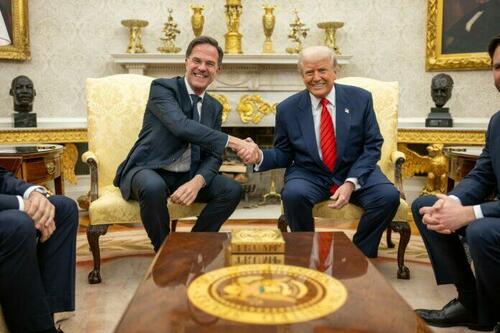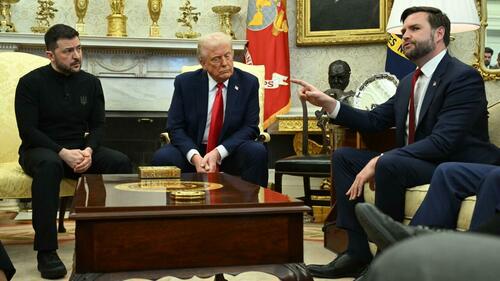Authored by Aaron Kheriarty via The Brownstone Institute,
Here’s the video link to my recent talk at Hillsdale College on AI and Transhumanism. I’m including below the text of the speech if you prefer to read rather than watch it.
AI and Transhumanism
Hackable Animals
My friends, let me introduce you to Yuval Noah Harari, a man chock full of big ideas. He explained during the covid crisis: “Covid is critical because this is what convinces people to accept, to legitimize, total biometric surveillance. If we want to stop this epidemic, we need not just to monitor people, we need to monitor what’s happening under their skin.” In a 60 Minutes interview with Anderson Cooper, Harari repeated this idea: “What we have seen so far is corporations and governments collecting data about where we go, who we meet, what movies we watch. The next phase is the surveillance going under our skin.” He likewise told India Today, when commenting on changes accepted by the population during covid:
We now see mass surveillance systems established even in democratic countries which previously rejected them, and we also see a change in the nature of surveillance. Previously, surveillance was mainly above the skin; now we want it under the skin… Governments want to know not just where we go or who we meet. They want to know what’s happening under our skin: what is our body temperature; what is our blood pressure; what is our medical condition?
Harari is clearly a man who wants to… get under your skin. He just might succeed. Another recent interview finds him waxing philosophical: “Now humans are developing even bigger powers than ever before. We are really acquiring divine powers of creation and destruction. We are really upgrading humans into gods. We are acquiring, for instance, the power to re-engineer human life.” As Kierkegaard once said of Hegel when he talks about the Absolute, when Harari talks about the future, he sounds like he’s going up in a balloon.
Forgive me, but a few last nuggets from Professor Harari will round out the picture of his philosophy, and his lofty hopes and dreams: “Humans are now hackable animals. You know, the whole idea that humans have this soul or spirit, and they have free will and nobody knows what’s happening inside me, so, whatever I choose, whether in the election or in the supermarket, that’s my free will—that’s over.” Harari explains that to hack human beings you need a lot of computing power and a lot of biometric data, which was not possible until recently with the advent of AI. In a hundred years, he argues, people will look back and identify the Covid crisis as the moment “when a new regime of surveillance took over, especially surveillance under the skin—which I think is the most important development of the 21st Century, which is this ability to hack human beings.”
People rightly worry that their iPhone or Alexa have become surveillance “listening devices”, and indeed, the microphone can be turned on even when the device is turned off. But imagine a wearable or implantable device that, moment-to-moment, tracks your heart rate, blood pressure, and skin conductance, uploading that biometric information to the cloud. Anyone with access to that data could know your exact emotional response to every statement made while you watch a presidential debate. They could gauge your thoughts and feelings about each candidate, about each issue discussed, even if you never spoke a word.
I could go on with more quotes from Professor Harari about hacking the human body, but you get the picture. At this point you may be tempted to dismiss Harari as nothing more than an overheated, sci-fi obsessed village atheist. After years binging on science fiction novels, the balloon of his imagination now perpetually floats up somewhere above the ether. Why should we pay any heed to this man’s prognostications and prophesies?
It turns out that Harari is a professor of History at the Hebrew University of Jerusalem. His bestselling books have sold over 20 million copies worldwide, which is no small shake. More importantly, he is one of the darlings of the World Economic Forum and a key architect of their agenda. In 2018, his lecture at the WEF, “Will the Future Be Human?” was sandwiched between addresses from German Chancellor Angela Merkel and French President Emmanuel Macron. So he’s playing in the sandbox with the big dogs.
In his WEF lecture Harari explained that in the coming generations, we will “learn how to engineer bodies and brains and minds,” such that these will become “the main products of the 21st Century economy: not textiles and vehicles and weapons, but bodies and brains and minds.” The few masters of the economy, he explains, will be the people who own and control data: “Today, data is the most important asset in the world,” in contrast to ancient times when land was the most important asset, or the industrial age when machines were paramount. WEF kingpin Klaus Schwab echoed Harari’s ideas when he explained: “One of the features of the Fourth Industrial Revolution is that it doesn’t change what we are doing; it changes us,” through gene editing and other biotechnological tools that operate under our skin.
Even the dreamy-eyed Harari admits there are some potential dangers with these developments: “If too much data is concentrated in too few hands, humanity will split not into classes but into two different species.” That would not, one supposes, be a good thing. But all things considered, he is more than willing to take these risks and forge ahead with this agenda. To be fair, Harari does not advocate for a future totalitarian state or rule by all-powerful corporations, but hopes to warn us of coming dangers.
In an exceptionally naïve proposal, however, Harari believes that the obvious problems posed by a tyrannical biosecurity state can be solved with more surveillance, by having citizens simply surveil the government: “Turn it around,” he said in a talk at the Athens Democracy Forum, “Surveil the governments more. I mean, technology can always go both ways. If they can surveil us, we can surveil them.” This proposal is—not to put too fine a point on it—incredibly stupid. As most of us learned in kindergarten, two wrongs don’t make a right.
The WEF made waves a few years back by posting on their website the slogan, “You will own nothing. And you will be happy.” Although the page was later deleted, the indelible impression remained: it provided a clear and simple description of the future envisioned by Davos Man. As the WEF savants predict, at the last stage of this development, we will find ourselves in a rent-only/subscription-only economy, where nothing really belongs to us. Picture the Uberization of everything.
To get a sense of this future, imagine the world as an Amazon warehouse writ large: a mandarin caste of digital virtuosos will call the shots from behind screens, directing the masses below with the aid of ever more refined algorithmic specificity. The prophetic Aldous Huxley foresaw this Brave New World in his 1932 novel. These changes will challenge not only our political, economic, and medical institutions and structures; they will challenge our notions of what it means to be human. This is precisely what its advocates celebrate, as we will see in a moment.
Corporatist arrangements of public-private partnerships, which merge state and corporate power, are well suited for carrying out the necessary convergence of existing and emerging fields. This biological-digital convergence envisioned by the WEF and its members will blend big data, artificial intelligence, machine learning, genetics, nanotechnology, and robotics. Schwab refers to this as the Fourth Industrial Revolution, which will follow and build upon the first three—mechanical, electrical, and digital. The transhumanists—who we will meet in a moment—have been dreaming of just such a merging of the physical, digital, and biological worlds for at least a few decades. Now, however, their visions are poised to become our reality.
Mechanisms of Control
The next steps in hacking human beings will involve attempted rollouts—which we should vigorously resist—of digital IDs, tied to fingerprints and other biometric data like iris scans or face IDs, demographic information, medical records, data on education, travel, financial transactions, and bank accounts. These will be combined with Central Bank Digital Currencies, giving governments surveillance power and control over every one of your financial transactions, with the ability to lock you out of the market if you do not comply with government directives.
Using biometrics for everyday transactions routinizes these technologies. We are conditioning children to accept biometric verification as a matter of course. For example, face IDs are now used in multiple school districts to expedite the movement of students through school lunch lines. Until recently, biometrics such as fingerprints were used only for high-security purposes—when charging someone with a crime, for example, or when notarizing an important document. Today, routine biometric verification for repetitive activities from mobile phones to lunch lines gets young people used to the idea that their bodies are tools used in transactions. We are instrumentalizing the body in unconscious and subtle, but nonetheless powerful, ways.
Those with economic interests in creating markets for their products (whether vaccines, digital surveillance hardware and software, or harvested data) will continue to deploy the carrots and sticks of access to medical care and other services to strongarm acceptance of digital IDs in underdeveloped nations. In developed nations they will initially use a velvet glove approach of nudges, selling digital IDs as convenience and time-saving measures that will be hard for many to turn down, like skipping long TSA security lines at airports. The privacy risks, including the possibility for constant surveillance and data harvesting, will fade into the background when you’re about to miss your flight if you can’t skip to the front of the line.
Unless we collectively decline to participate in this new social experiment, digital IDs—tied to private demographic, financial, location, movement, and biometric data—will become mechanisms for bulk data harvesting and tracking of populations around the globe. We should resist—including by opting out of the new face ID scans at TSA airport screening checkpoints, which we can still legally do.
Once fully realized, this surveillance system will offer unprecedented mechanisms of control, allowing the regime to be maintained against any form of resistance. This technocratic dream would entrench the most intransigent authoritarian system the world has ever known—in the sense that it could maintain itself against any form of opposition through monopolistic technological and economic power. The suppression of dissent will happen in large part through the system’s financial controls, especially if we adopt Central Bank Digital Currencies. Try to resist or step outside the system’s strictures and the doors to markets will simply close. This means that once this system is in place, it could prove almost impossible to overthrow.
Microwaved Eugenics
Harari—who I cited extensively at the beginning of this talk—is among the more prominent members of a new species of academics, activists, and “visionaries” that refer to themselves as transhumanists. These folks aim to use technology not to alter the lived environment, but to fundamentally alter human nature itself. The goal is to “upgrade” or “enhance” human beings. This is both possible and desirable, as Harari explains, because all organisms—whether humans or amoebas or bananas or viruses—are at bottom just “biological algorithms.” This is the old materialist, social Darwinist ideology turbocharged and techno-upgraded with the tools of gene editing, nanotechnology, robotics, and advanced pharmaceuticals. Transhumanism is microwaved eugenics. There is nothing new under the sun.
The 20th-century eugenicists referred to disabled persons as “useless eaters.” Echoing this rhetoric on multiple occasions, Harari has puzzled over the question of what to do with people in the future who will refuse AI-mediated enhancement—folks he refers to as “useless people.” “The biggest question maybe in economics and politics in the coming decades,” he predicts, “will be what to do with all these useless people?” He goes on to explain, “The problem is more boredom, what to do with them and how will they find some sense of meaning in life when they are basically meaningless, worthless.”
Harari suggests one possible solution to the problem of what to do with useless people: “My best guess at present is a combination of drugs and computer games.” Well, at least we have a head start on that, a fact that does not escape Harari’s attention: “You see more and more people spending more and more time, or solving their time with drugs and computer games, both legal drugs and illegal drugs,” he explains. This is where Harari predicts those who refuse to be hacked for AI-enhancement purposes will find themselves.
Encountering Harari’s thought was not my first brush with the transhumanist movement. Several years ago, I spoke on a panel at Stanford University sponsored by the Zephyr Institute on the topic of transhumanism. I critiqued the idea of “human enhancement,” the use of biomedical technology not to heal the sick but to make the healthy “better than well,” i.e., bigger, faster, stronger, smarter, etc. The event was well attended by several students from the Transhumanist Club at Stanford.
We had a cordial discussion, and I enjoyed chatting with these students after the talk. I learned the symbol of their student group was H+ (“humanity-plus”). They were exceptionally bright, ambitious, and serious young men and women—typical Stanford students. Some of them had read their Plato in addition to their Scientific American. They sincerely wanted to make the world better. Perhaps there was a closet authoritarian or two among them, but my impression was that they had no interest in facilitating world domination by oligarchic corporatist regimes empowered to hack human beings.
Nevertheless, I got the impression that they did not comprehend the implications of the axioms they had accepted. We can choose our first principles, our foundational premises, but then we must follow them out to their logical conclusions; otherwise, we deceive ourselves. These Stanford students were not outliers, but representative of the local culture: transhumanism is enormously influential in Silicon Valley and shapes the imagination of many of the most influential tech elites. Proponents include the Oxford University philosopher Nick Bostrom, Harvard geneticist George Church, the late physicist Stephen Hawking, Google engineer Ray Kurzweil, and other notables.
The Transhumanist Dream
Returning to Harari’s 2018 talk at the WEF, he admits that control of data might not only enable human elites to build digital dictatorships, but opines that hacking humans may facilitate something even more radical: “Elites may gain the power to re-engineer the future of life itself.” With his Davos audience warmed up he then waxes to a crescendo: “This will not just be the greatest revolution in the history of humanity, it will be the greatest revolution in biology since the beginning of life four billion years ago.”
Which is, of course, a pretty big deal. Because for billions of years, nothing fundamental changed in the basic rules of the game of life, as he explains: “All of life for four billion years—dinosaurs, amoebas, tomatoes, humans—all of life was subject to the laws of natural selection and to the laws of organic biochemistry.” But not anymore: all this is about to change, as he explains:
Science is replacing evolution by natural selection with evolution by intelligent design—not the intelligent design of some god above the cloud, but our intelligent design, and the design of our clouds: the IBM cloud, the Microsoft cloud—these are the new driving forces of evolution. At the same time, science may enable life—after being confined for four billion years to the limited realm of organic compounds—science may enable life to break out into the inorganic realm.
The opening sentence here perfectly echoes the original definition of eugenics from the man who coined the term in the late 19th Century, Sir Francis Galton, Charles Darwin’s cousin: “What nature does blindly, slowly, and ruthlessly [evolution by natural selection], man may do providently, quickly, and kindly [evolution by our own—or by the cloud’s—intelligent design].” But what is Harari talking about in that last sentence—life breaking out into the inorganic realm?
It’s been a transhumanist dream from the dawn of modern computing that someday we will be able to upload the informational content of our brains, or our minds (if you believe in minds), into some sort of massive computing system, or digital cloud, or other technological repository capable of storing massive amounts of data. On this materialist view of man, we will then have no more need for our human body, which, after all, always fails us in the end. Shedding this mortal coil—this organic dust that always returns to dust—we will find the technological means to… well, to live forever. Living forever in the digital cloud or the mainframe computer in the sky constitutes the transhumanists’ eschatology: salvation by digital technology.
This project is physically (and metaphysically) impossible, of course, because man is an inextricable unity of body and soul—not some ghost in the machine, not merely a bit of software transferable to another piece of hardware. But set that aside for now; look instead at what this eschatological dream tells us about the transhumanist movement. These imaginative flights of fancy have obviously moved well beyond the realm of science. Transhumanism is clearly a religion—indeed, a particular type of neo-Gnostic religion. It attracts adherents today—including educated, wealthy, powerful, culturally influential adherents—because it taps into unfulfilled, deeply religious aspirations and longings. It is an ersatz substitute religion for a secular age.
That Hideous Strength
I cannot emphasize enough the importance for our time of C.S. Lewis’s book, The Abolition of Man. Lewis once remarked that his dystopian novel, That Hideous Strength, the third installment in his “space trilogy,” was The Abolition of Man in fictional form. Those who have learned from Huxley’s Brave New World and Orwell’s Nineteen Eighty-Four would do well to also read That Hideous Strength, an underappreciated entry in the dystopian fiction genre. Back in 1945, Lewis foresaw Yuval Harari and his transhumanist ilk on the horizon. He brilliantly satirized their ideology in the novel’s character of Filostrato, an earnest but deeply misguided Italian scientist.
In the story, a cabal of technocrats take over a bucolic university town in England—think of Oxford or Cambridge—and go to work immediately transforming things according to their vision of the future. The novel’s protagonist, Mark Studdock, is recruited away from the university to the technocrats’ new institute. Mark desires above all to be part of the progressive set, the “inner ring” that is steering the next big thing. He spends his first several days at the N.I.C.E (National Institute for Coordinated Experiments) trying in vain to ascertain exactly what his new job description entails.
Eventually, he figures out that he has been retained mainly to write propaganda explaining the Institute’s activities to the public. Somewhat dispirited—he is a scholar of the social sciences, after all, and not a journalist—he sits down at lunch one day with Filostrato, a member of the N.I.C.E. inner circle, and learns a bit about this scientist’s worldview.
It happens that Filostrato has just given orders to cut down some beech trees on the Institute’s property and replace them with trees made of aluminum. Someone at the table naturally asks why, remarking that he rather liked the beech trees. “Oh, yes, yes,” replies Filostrato. “The pretty trees, the garden trees. But not the savages. I put the rose in my garden, but not the brier. The forest tree is a weed.” Filostrato explains that he once saw a metal tree in Persia, “so natural it would deceive,” which he believes could be perfected. His interlocutor objects that a tree made of metal would hardly be the same as a real tree. But the scientist is undeterred and explains why the artificial tree is superior:
“But consider the advantages! You get tired of him in one place: two workmen carry him somewhere else: wherever you please. It never dies. No leaves to fall, no twigs, no birds building nests, no muck and mess.”
“I suppose one or two, as curiosities, might be rather amusing.”
“Why one or two? At present, I allow, we must have forests, for the atmosphere. Presently we find a chemical substitute. And then, why any natural trees? I foresee nothing but the art tree all over the earth. In fact, we clean the planet.”
When asked if he means that there would be no vegetation at all, Filostrato replies, “Exactly. You shave your face: even, in the English fashion, you shave him every day. One day we shave the planet.” Someone wonders what the birds will make of it, but Filostrato has a plan for them too: “I would not have any birds either. On the art tree I would have the art birds all singing when you press a switch inside the house. When you are tired of the singing you switch them off. Consider again the improvement. No feathers dropped about, no nests, no eggs, no dirt.”
Mark replies that this sounds like abolishing pretty much all organic life. “And why not?” Filostrato counters. “It is simple hygiene.” And then, echoing the rhetoric of Yuval Harari, we hear Filostrato’s soaring peroration, which would have been right at home in World Economic Forum’s annual meeting in Davos:
“Listen, my friends. If you pick up some rotten thing and find this organic life crawling over it, do you not say, ‘Oh, the horrid thing. It is alive,’ and then drop it?… And you, especially you English, are you not hostile to any organic life except your own on your own body? Rather than permit it you have invented the daily bath…. And what do you call dirty dirt? Is it not precisely the organic? Minerals are clean dirt. But the real filth is what comes from organisms—sweat, spittles, excretions. Is not your whole idea of purity one huge example? The impure and the organic are interchangeable conceptions…. After all, we are organisms ourselves.
“I grant it… In us organic life has produced Mind. It has done its work. After that, we want no more of it. We do not want the world any longer furred over with organic life, like what you call the blue mold—all sprouting and budding and breeding and decaying. We must get rid of it. By little and little, of course. Slowly we learn how. Learn to make our brains live with less and less body: learn to build our bodies directly with chemicals, no longer have to stuff them full of dead brutes and weeds. Learn how to reproduce ourselves without copulation.”
Someone interjects that this last part does not sound like much fun, but Filostrato responds, “My friend, you have already separated the Fun, as you call it, from fertility. The Fun itself begins to pass away…. Nature herself begins to throw away the anachronism. When she has thrown it away, then real civilization becomes possible.” Keep in mind that this was written decades before the invention of in vitro fertilization and other assisted reproductive technologies, as well as the sexual revolution that brought widespread acceptance of the oral contraceptive pill. As Lewis reveals at the end of the novel, however, the N.I.C.E is not controlled by brilliant men of science but is ultimately under the sway of demonic forces.
In both the real character of Harari and the fictional character of Filostrato we find men who embrace, indeed celebrate, the idea that human beings can shed the messy business of organic life and somehow transfer our bodily existence into sterile inorganic matter. We encounter in both characters the kind of man who wants to bleach the entire earth with hand sanitizer. Were we not nudged, perhaps a bit too far, in the direction of Filostrato’s dream during covid, as we attempted to fully disinfect and sanitize our lived environments, and transfer all our communications to the digital realm? Have we not also moved in this direction by spending more waking hours glued to screens in a virtual world than interacting with people in the real world, while reams of behavioral data are extracted from our every keystroke and click for predictive analysis by AI?
Organic matter is alive, whereas inorganic matter is dead. I can only conclude that the transhumanists’ dream is, in the last analysis, a philosophy of death. But we must grant that it has become an influential philosophy among many of today’s elites. In one way or another, all of us have been seduced by the mistaken notion that by massively coordinated vigilance and the application of technology, we could rid our lived environments of pathogens and scrub our world entirely clean—perhaps even thwarting death.
As the Italian philosopher Augusto Del Noce pointed out, philosophies that begin from faulty premises not only fail to achieve their purpose, they inevitably end up producing the exact opposite of their stated goals. Transhumanism aims at superior intelligence, superhuman strength, and unending life.
But because it is grounded in an entirely false notion of what it means to be human, if we recklessly embrace the transhumanist dream, we will find ourselves instead in a nightmare dystopia of stupidity, weakness, and death.

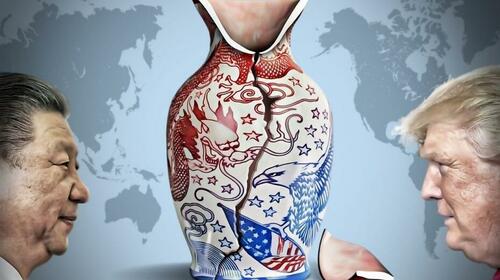
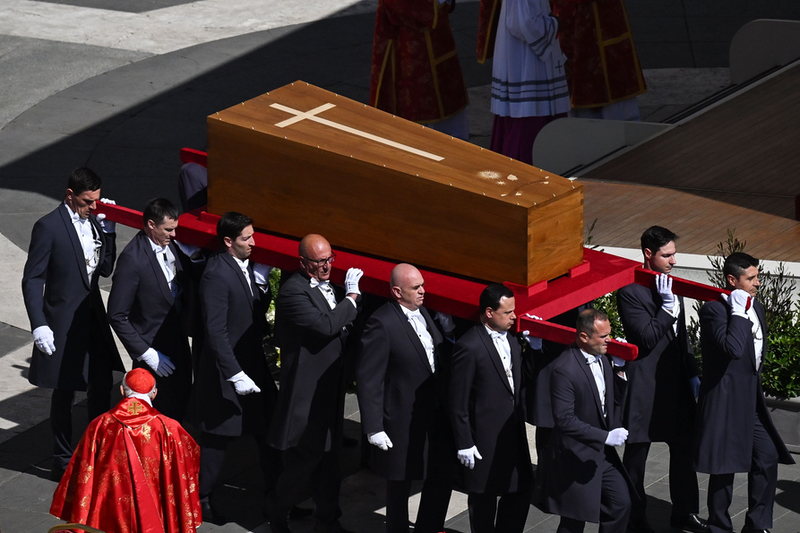 (image credit: James Veysey/Shutterstock)
(image credit: James Veysey/Shutterstock)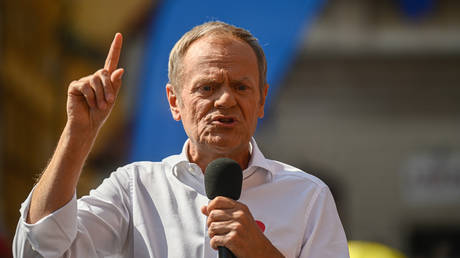
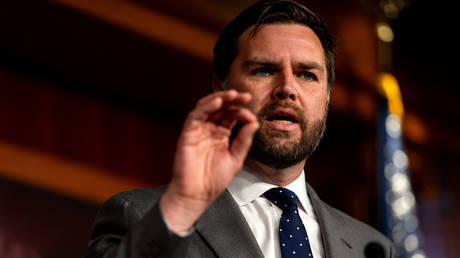
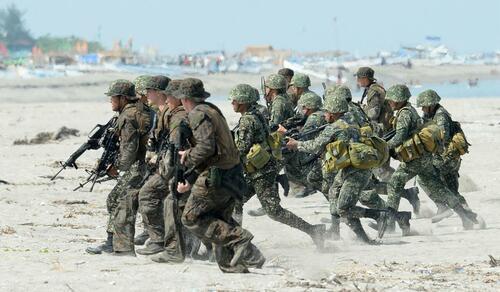 Illustrative/AFP
Illustrative/AFP
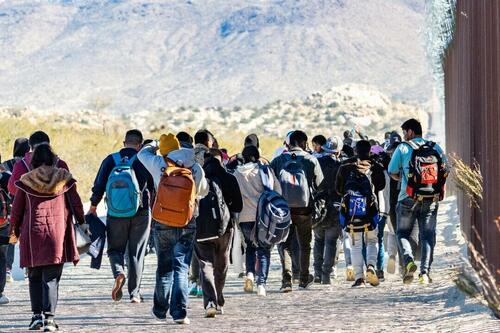
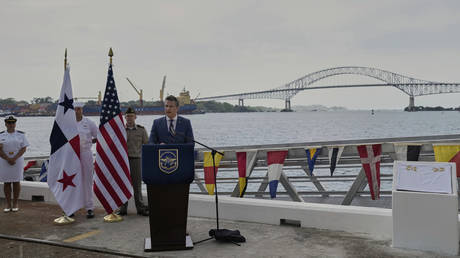
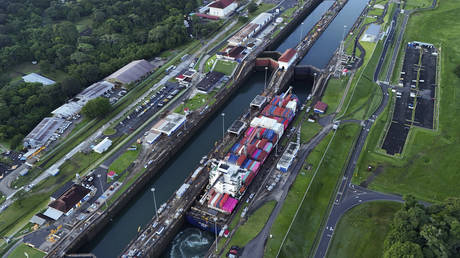
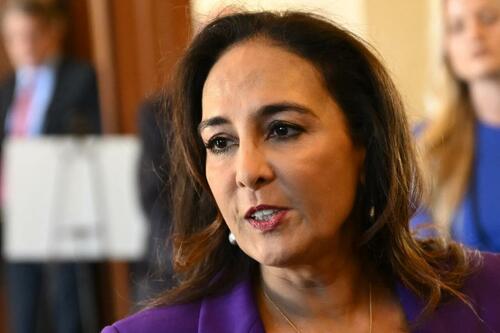 Harmeet Dhillon
Harmeet Dhillon

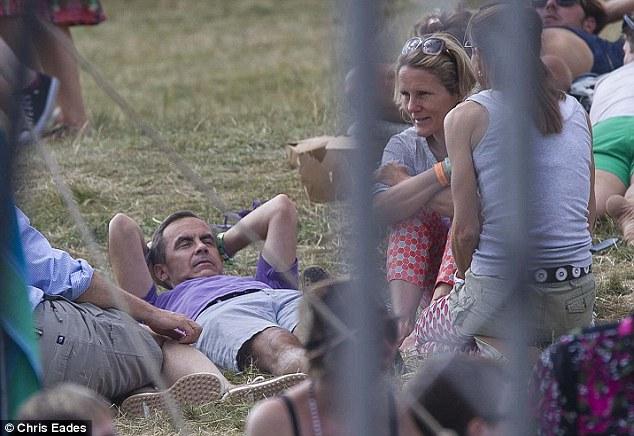





 Satisfaction guaranteed. Simply ask for a refund...
Satisfaction guaranteed. Simply ask for a refund...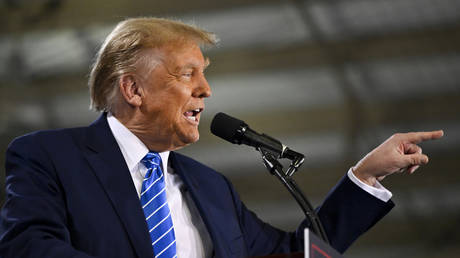

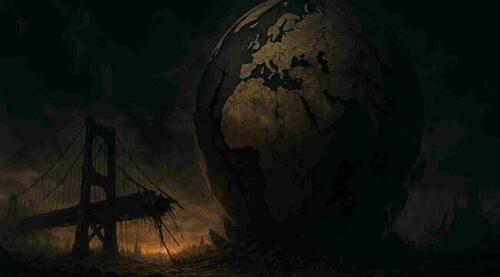
 The damaged St. Nicholas Monastery in Gornal. Source: the Russian Orthodox Church Department for External Church Relations
The damaged St. Nicholas Monastery in Gornal. Source: the Russian Orthodox Church Department for External Church Relations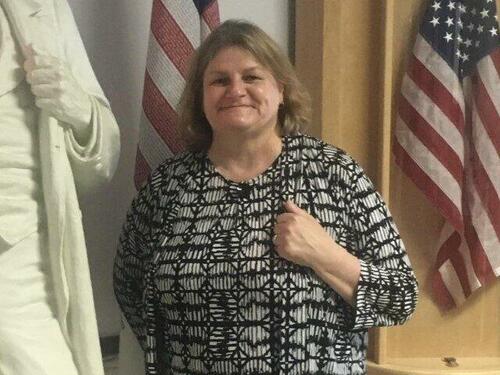
 Click pic... add to cart (one for each car & your go-bag storage)... be more prepared. Satisfaction guaranteed or your money back.
Click pic... add to cart (one for each car & your go-bag storage)... be more prepared. Satisfaction guaranteed or your money back.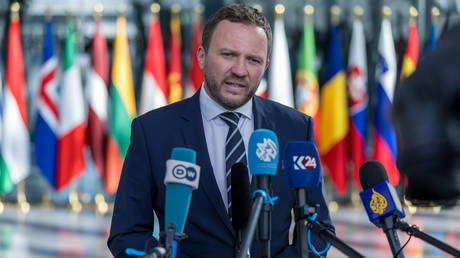


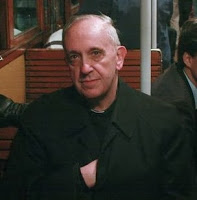


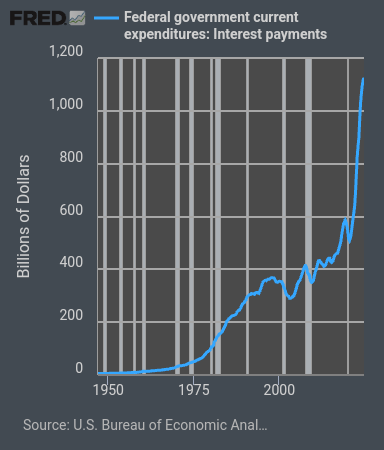 Thomas Stone- The end of the road; the deficits can't continue
Thomas Stone- The end of the road; the deficits can't continue
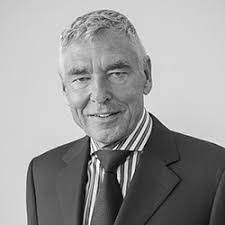
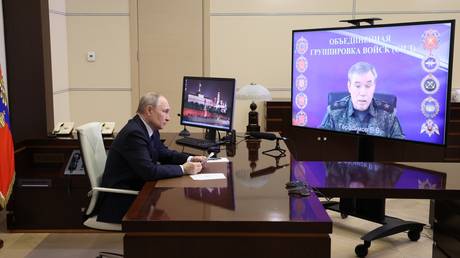
 Secretary of Defense Pete Hegseth participates in a morning physical training session with troops stationed in Warsaw, Poland, on Feb. 14, 2025. DoD photo by U.S. Navy Petty Officer 1st Class Alexander C. Kubitza
Secretary of Defense Pete Hegseth participates in a morning physical training session with troops stationed in Warsaw, Poland, on Feb. 14, 2025. DoD photo by U.S. Navy Petty Officer 1st Class Alexander C. Kubitza